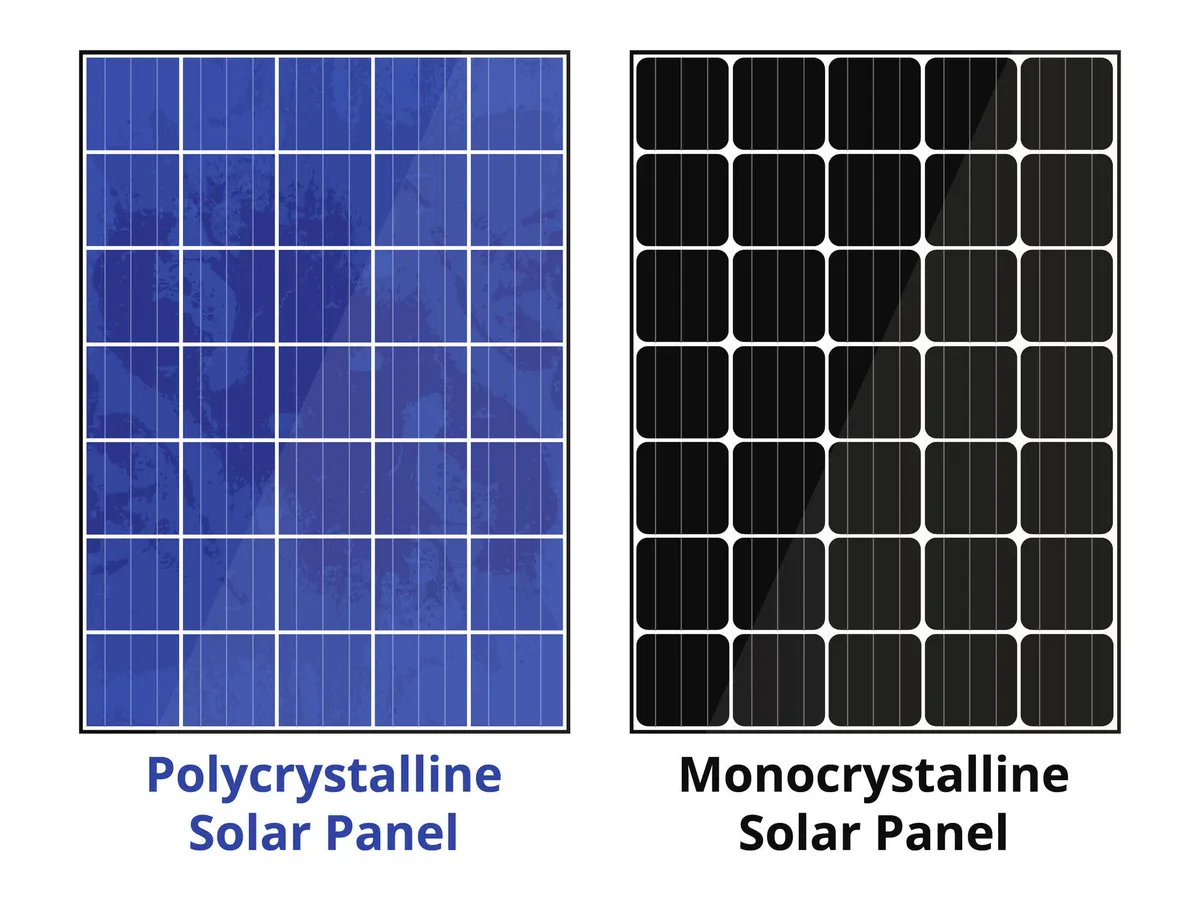Monocrystalline VS. Polycrystalline Solar Panels
time:2023-08-22 08:49:24 Views:0 author:Jinan Freakin Power Ltd.
Here's how the two most common solar panel types stack up.
Monocrystalline | Polycrystalline | |
Appearance | Black and very sleek in appearance. The cells have square wafers with rounded corners | Blue in appearance. The cells are square-shaped without rounded corners. |
Efficiency | Ranges from 17% to 22%. | Ranges from 15% to 17% |
Temperature Coefficient | From -0.26% to -0.35% on the Celsius scale. | Typically about -0.5%. |
Lifespan | 25 years and longer | 25 years and longer |
Cost | $1 to $1.50 per watt, without considering installation. | $.90 to $1 per watt, without considering installation. |
Appearance
Beauty is in the eye of the beholder, but monocrystalline panels have a darker appearance that blends in better with most roofs. Polycrystalline panels look blue and stand out a bit more. There are differences in the shape of the actual cells, but those probably won't draw the eye as much as color.

Efficiency
Efficiency measures the amount of sunlight that a solar panel turns into electricity. The higher the number, the more efficient the system. Monocrystalline panels have an efficiency range from 17% to 22%, while the efficiency range for polycrystalline solar panels is from 15% to 17%.
Temperature coefficient
Temperature coefficient is a measure of how much less efficient a solar panel gets for every degree Celsius over 25 (77 degrees Fahrenheit) they get. The most popular monocrystalline models have temperature coeffients that range from -.26% to -.35%. For polycrystalline solar panels, the rate is a bit worse.
Lifespan
The amount of electricity produced by solar panels is reduced, or degrades, each year. This affects the panels' lifespans. For monocrystalline solar panels, you're likely to have about 85% of the initial output after 25 years, the length of a typical warranty. However, many systems can last even longer. The degradation for polycrystalline solar panels is slightly worse, resulting in a steeper decline and shorter lifespan.
Cost
The cost of purchasing and installing solar panels depends on the number of panels you need, your average energy use, the output of the solar panels and the amount of sunshine at your home. The average cost of a solar installation is somewhere between three and four dollars per watt, depending on your market. For the first time in a long time, the cost of solar panels actually increased in 2023, thanks to inflation and lingering supply chain issues. Despite the volatility, polycrystalline solar panels will still be cheaper upfront, though you'll likely save less over the lifetime of your solar panels.
Best applications for monocrystalline vs polycrystalline solar panels
Monocrystalline panels are known for their higher efficiency and sleek, uniform black appearance. As such, homeowners tend to favor them because they're a bit prettier. Given their superior efficiency, they can generate more electricity from a smaller area, making them an excellent choice when your roof size is smaller.
Best Solar Batteries
Additionally, monocrystalline panels' higher electricity yield means you'll save significant money on your electricity bills and get a higher return on your investment over time, likely part of the reason they're far more commonly installed in residential applications. On the other hand, polycrystalline solar panels are a more cost-effective option for customers on a budget. They're best used on commercial buildings with a large roof size.
How to save on solar panels
Optivolt's Kalyanpur notes there are several creative ways to save money on your solar panel investment. Homeowners can take advantage of tax credits, grants or other local incentives that can significantly reduce the net cost of the solar system, irrespective of the type of solar panel chosen. Any investment in a solar panel system requires a delicate balance between upfront costs, long-term savings, and the customer's unique situation. Polycrystalline panels are more affordable than monocrystalline panels, but you must contend with their lower electricity output.
Other types of solar panels
Thin-film solar panels are the third most popular type of solar panels. They are primarily used on solar farms and rarely for residential purposes due to their low-efficiency ratio, ranging from 10% to 13%. They need a larger surface area to generate the same amount of electricity as monocrystalline and polycrystalline solar panels. Their lifespan typically ranges from 10 to 20 years. Despite their relatively low efficiency and greater space requirements, thin-film panels have the best temperature coefficient, which makes them great for use in high-temperature locations with warmer climates. The price of thin-film solar panels ranges between $1 and $1.50 per watt.
The bottom line
When choosing between monocrystalline and polycrystalline solar panels, it's essential to understand the key differences of both types of solar panels and how those differences may impact the system's overall performance. Monocrystalline solar panels are better suited for residential uses and offer greater savings over a long period due to their higher efficiency rates. The downside is they cost more. Polycrystalline panels, on the other hand, are slightly cheaper than monocrystalline panels but less efficient. You're likely to get monocrystalline solar panels if you work with a solar company, since they're much more common. In a few cases, polycrystalline panels may make sense, though they're currently a much smaller portion of the residential panels out there.




